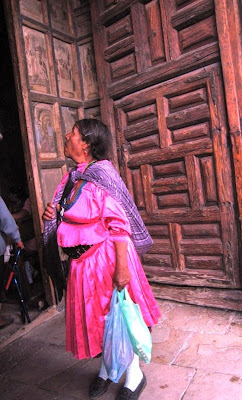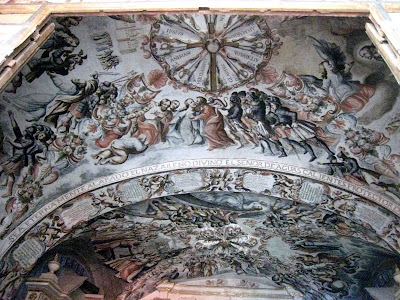Every day is an adventure of sorts
Today, I was on a local bus
Heading home from the farm
Where I have just purchased
The week's vegetables.
I arrange myself on the seat,
With my three large bags of food
A local man wearing jeans
White shirt, vest and a cowboy hat
Carrying an ornately made,
Well worn twelve string guitar
Entered the bus, stood at the front
And began singing.
Rustling around in my bag
I find my camera
And take a little video of the event:
The locals stare straight ahead
Don't look at him when he asks for money afterward
But I am happy to pay because I am always amazed
At the lack of self consciousness that eople have here
When it comes to playing music in public.
Plus it was really nice.
You don't need to have a gig,
You just go out on the bus
Or walk the streets and ask people if they would like a song
Then sing like there's no tomorrow,
Or no rest of today for that matter.
You don't even have to be good, you just do it
For that, I am appreciative every day I live here
And see things like this.
Besides all the auditory pleasures here
(And Mexico is cacophonous at times)
There are visual delights and wonders as well
Such as this delightful house, which I discovered
Several weeks ago while walking to town.

The colors are just fantastic,
A rich blue wall
Bright yellow door, trimmed in red
Red iron work around the meter box

A Virgin of Guadalupe tile mural
Is punctuated with muliticolored glass beads
Making a frame around her
Then colored plastic papel picado,
Cut paper party decorations
Strung across the front of the house.
Notice that the door is not to the ground
But dropped right into the wall
The walkway in front of the house...
Was artfully redone this week

A simple round doorstep
Made with a collection of talavera tiles
And a winding trail of tiles on either side
Going up and down the sidewalk
With little trees, made out of flowering tiles
Beneath the oval arches above them.

Further down the street
Inside a tin work studio
A rusted iguana
is hanging out in the window

And another outrageously painted wall
In bright turquoise blue
With rosa Mexicana pink in the brick inlay
Flowering trees and shrubs hanging off it
And hand written sign on the door

Everyone is out on the streets here

While waiting for the bus
On a very busy street
On the median strip
Sits a man with no legs
On a four wheel cart
Covered in a yellow and white shade cloth
Selling almonds for 10 pesos a bag
Cars are whizzing by
He is unfazed
Here's a little 3 second video
For the full effect
You see everyone out on the streets here
Mothers with young babies wrapped in rebozos, held close
The old, the infirm, the disabled, children selling 'chicle'
Mariachis, singers, and young people arm in arm
No one is hiding away
Everyone has something to offer
It is gritty and real and affirming at the same time






















